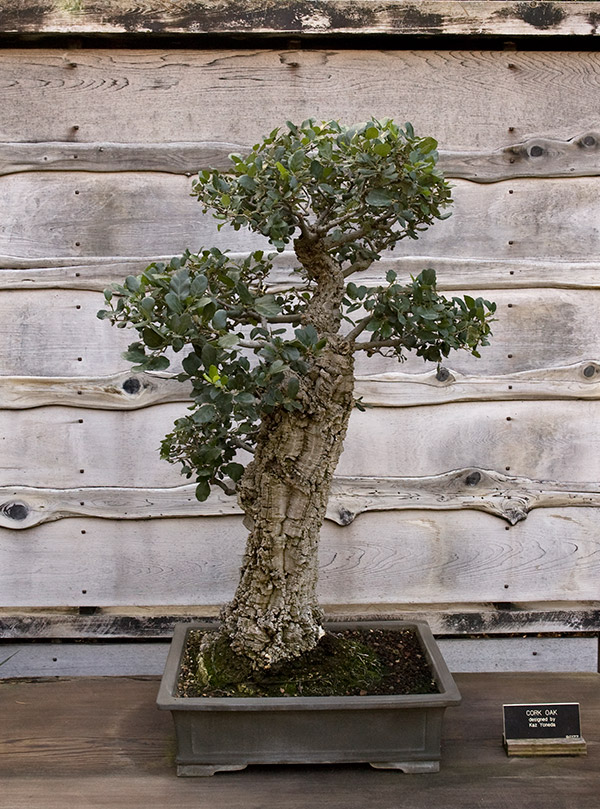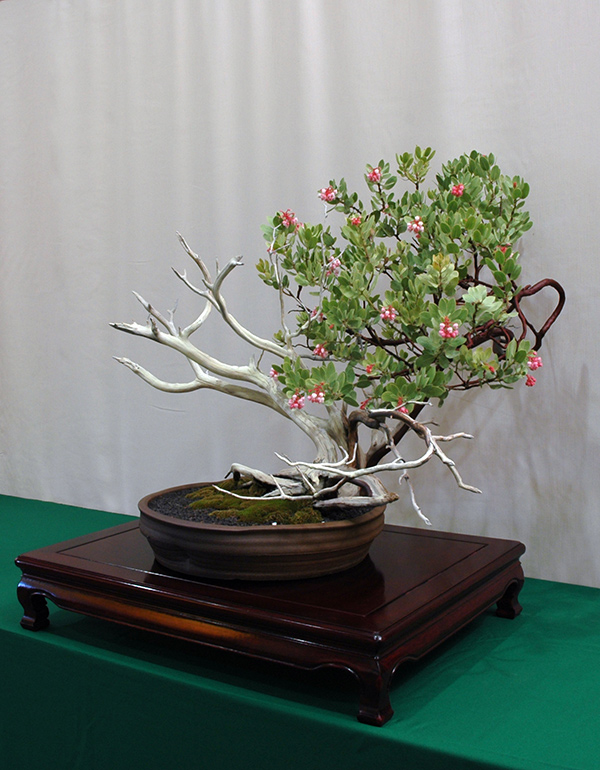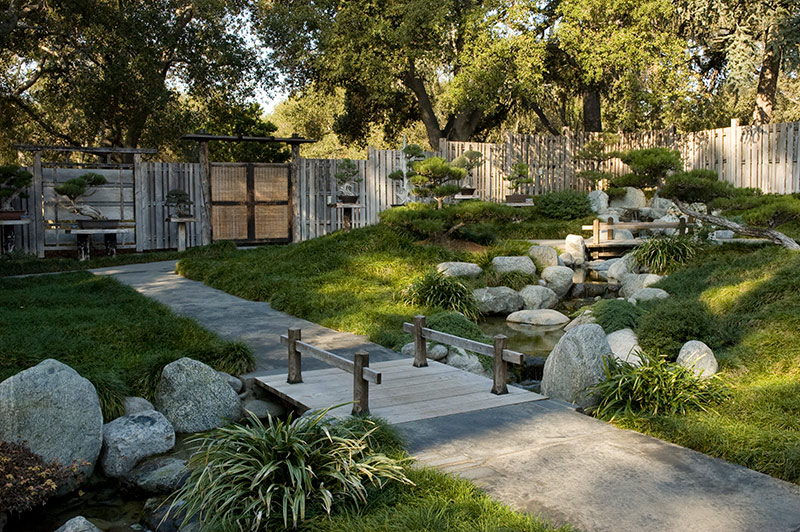
Dozens of bonsai specimens will be on display this weekend as the California Bonsai Society presents its 57th annual Bonsai Show at The Huntington.
From ancient origins in China and Japan, the art of creating miniature bonsai trees has grown in popularity to become an international hobby. Today, bonsai reflects the nationalities, philosophies, and regional plants of enthusiasts worldwide. What accounts for this enduring passion that collectors, connoisseurs, and growers have for this horticultural art form? A good place to find the answer is right here at The Huntington. Dozens of world-class specimens will be on display Saturday and Sunday, March 29 and 30, when the California Bonsai Society presents its 57th annual Bonsai Show. The event takes place from 10:30 a.m. to 4:30 p.m. in the Frances Lasker Brody Botanical Center and is included with general admission to The Huntington.

Cork Oak in the Zillgitt Bonsai Court.
In addition to being a terrific display of masterpiece trees, the Bonsai Show is a rare opportunity to talk to the men and women who have grown them. Hearing experts discuss the history and philosophy and the actual how-to of bonsai can give novices a much deeper appreciation of the art form. The passion these individuals have for bonsai is contagious.
The word bonsai literally means a tree planted in a pot. The chosen specimen can be reclaimed from nature, such as a gnarled and half-dead stump coaxed into bearing new life. Trees can also be grown from seeds or cuttings. Japanese black pine, maple, and juniper are popular choices, but nontraditional plants such as manzanita, bougainvillea, and olive are also used. Over a period of years or decades, the trees are painstakingly pruned to stimulate growth and trained with wire to shape branches and trunks. The goal is to achieve naturalistic or stylized beauty on a small scale. Given proper care, bonsai can live for hundreds of years.

Flowering Manzanita (seen in the 2011 show).
Perhaps one explanation for the growing appeal of bonsai is that it’s an art form that can’t be experienced in a hurry. It may well be the perfect antidote for the fast pace of modern life.
Known as penjing in China, miniature trees can be found in Chinese scroll art, poetry, and even mythology dating as far back as the Eastern Han dynasty (25–221 A.D.). Tomb paintings from the Tang dynasty (618–907 A.D.) portray attendants carrying potted trees. Buddhist monks from China introduced miniature trees to Japan sometime around the 13th century. There the art form became highly formalized, reaching its peak in the 17th and 18th centuries. Bonsai gained worldwide exposure—and fashionable acclaim—at the Paris World Exposition in 1900. Today, bonsai is enjoyed by devotees around the world who lend their own cultural interpretations, as well as their native trees, to the enrichment of the art form.
In addition to seeing the trees on view in the show, visitors can take a short stroll across the grounds to the Japanese Garden area, where The Huntington’s own bonsai collection is showcased. Some 90 specimens are displayed in two adjoining courts in a wooded area shaded by majestic pines, oaks, and deodars, with a small creek flowing through the landscape. If you didn't already have a passion for bonsai when you arrived, you're almost certain to fall under its spell before you leave.

Zillgitt Court is one of two venues for the year-round display of bonsai in The Huntington’s Japanese Garden.
Lisa Blackburn is communications coordinator at The Huntington.
